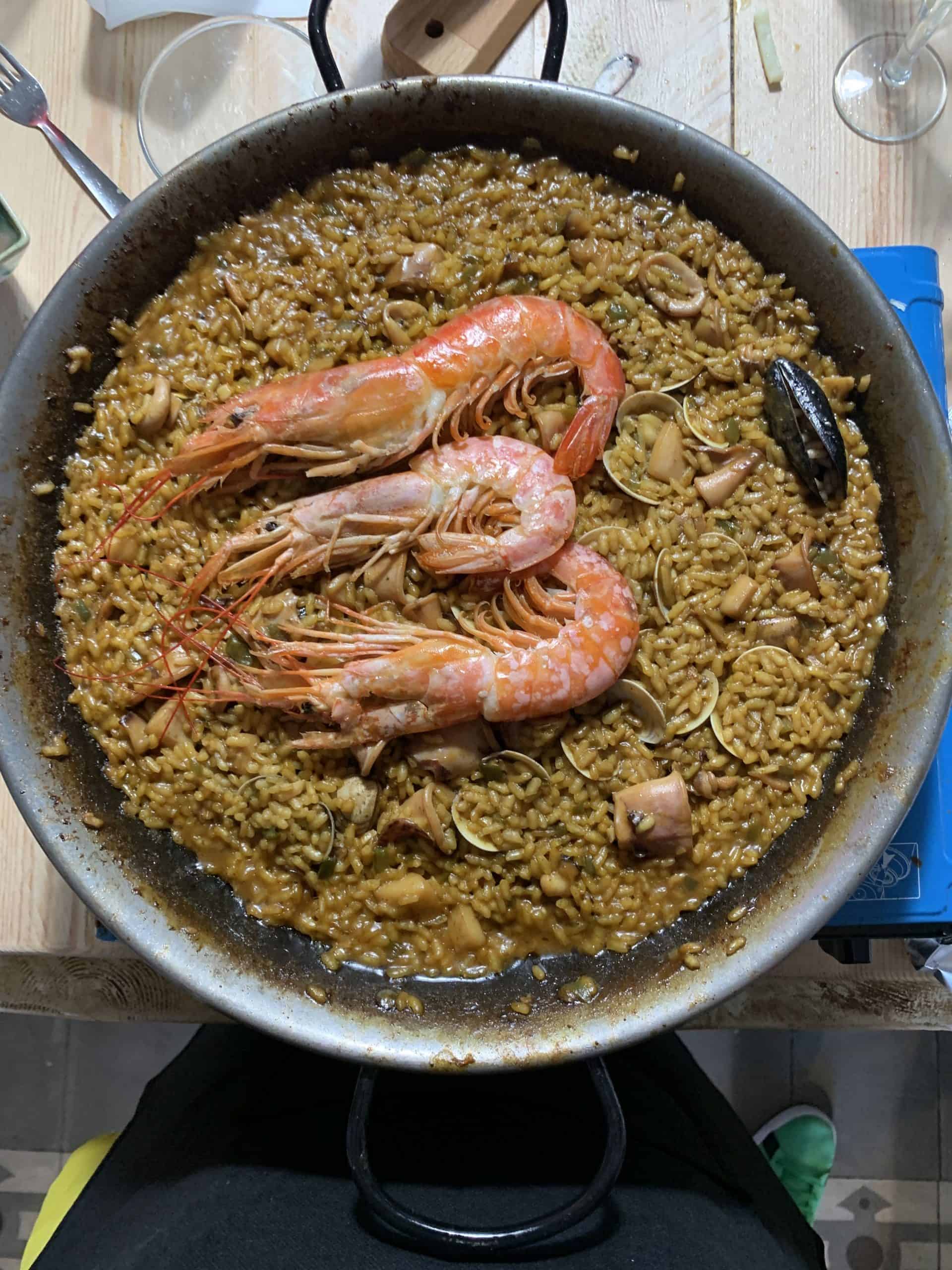You really cannot talk about Spain without mentioning food, which is why I couldn’t think of a better way to start my trip than with a cooking class.
Cookly offers a wide variety of immersive cooking classes around the world.
All the classes pair you with locals so that you can experience both the food and local culture.
They were kind enough to hook me up with Just Royal BCN for a food market tour and cooking class.
Don’t worry, I’ve got recipes to share!
La Boqueria Market
The class begins with a quick tour of the famous Boqueria Market – a massive public food market in the Ciudad Vieja district.
The guide gives you tips on finding the best deals, such as avoiding the center aisle where the tourists tend to gravitate.
Chances are, anything you can find in the center aisle, you can also find somewhere else in the market without the inflated tourist prices.
Our guide pointed out local favorites such as fresh fish, Iberico hams cured for 2-5 years, and the highest quality saffron.
I learned that some people will claim that paella should be orange due to the saffron, but the truth is, saffron won’t turn your rice orange – that’s just food coloring.
Saffron is an often misused spice; many people toss it into dishes then complain that it is flavorless.
To get the flavor to release, you have to place it in warm water for 20 minutes and then mash it.
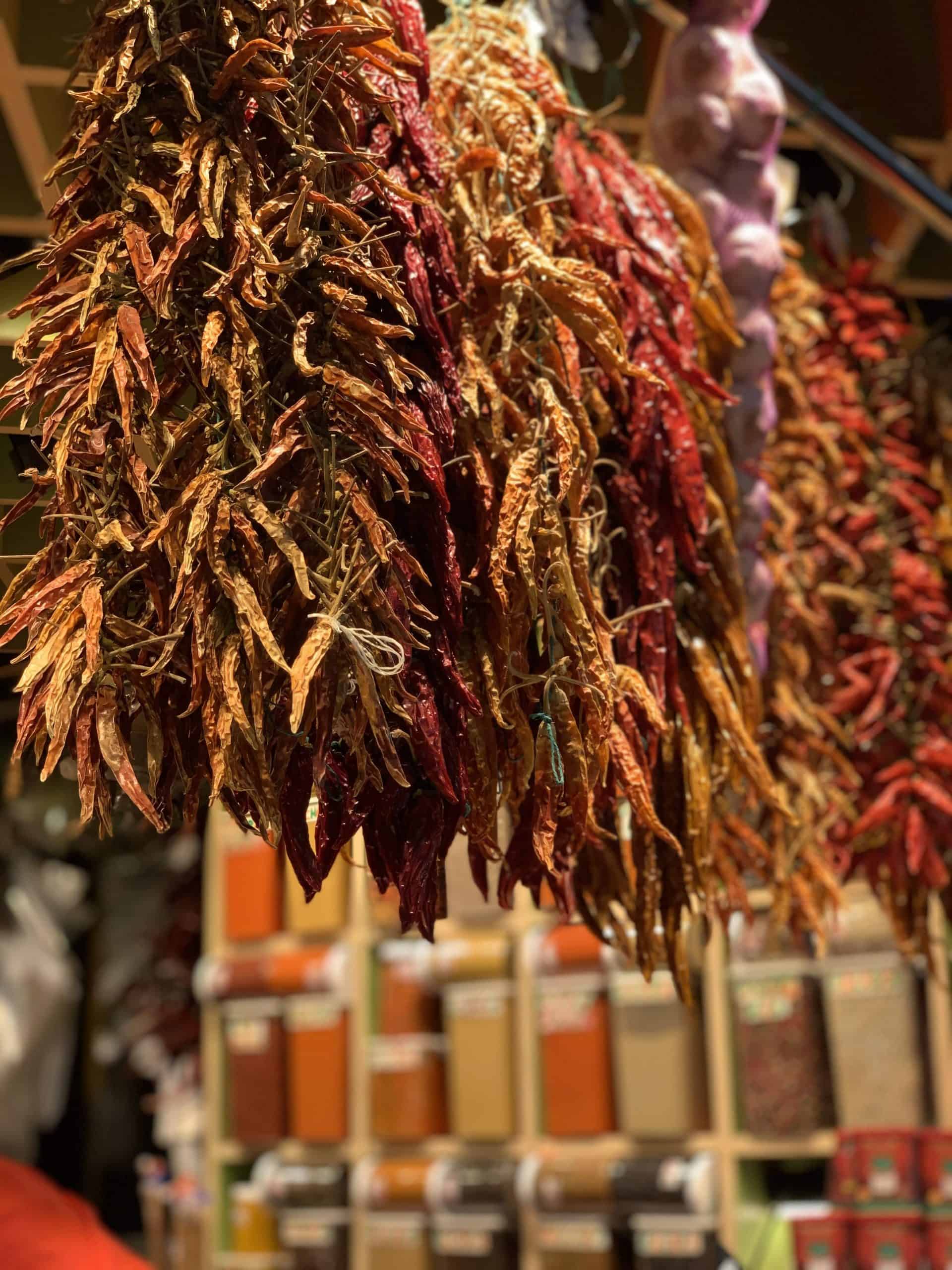
I was told there would be snacks
The worst part about cooking classes is that you have to do a lot of work before you can actually eat, but Just Royal BCN was prepared for our hunger.
As soon as we returned from the market, we were presented with several rounds of tapas that they had prepared in advance.
We were treated to tapas from every region of Spain, savoring fried baby squid from Andalusia all the way to Madrid’s papas bravas.
The snack (tapas) game was on point.
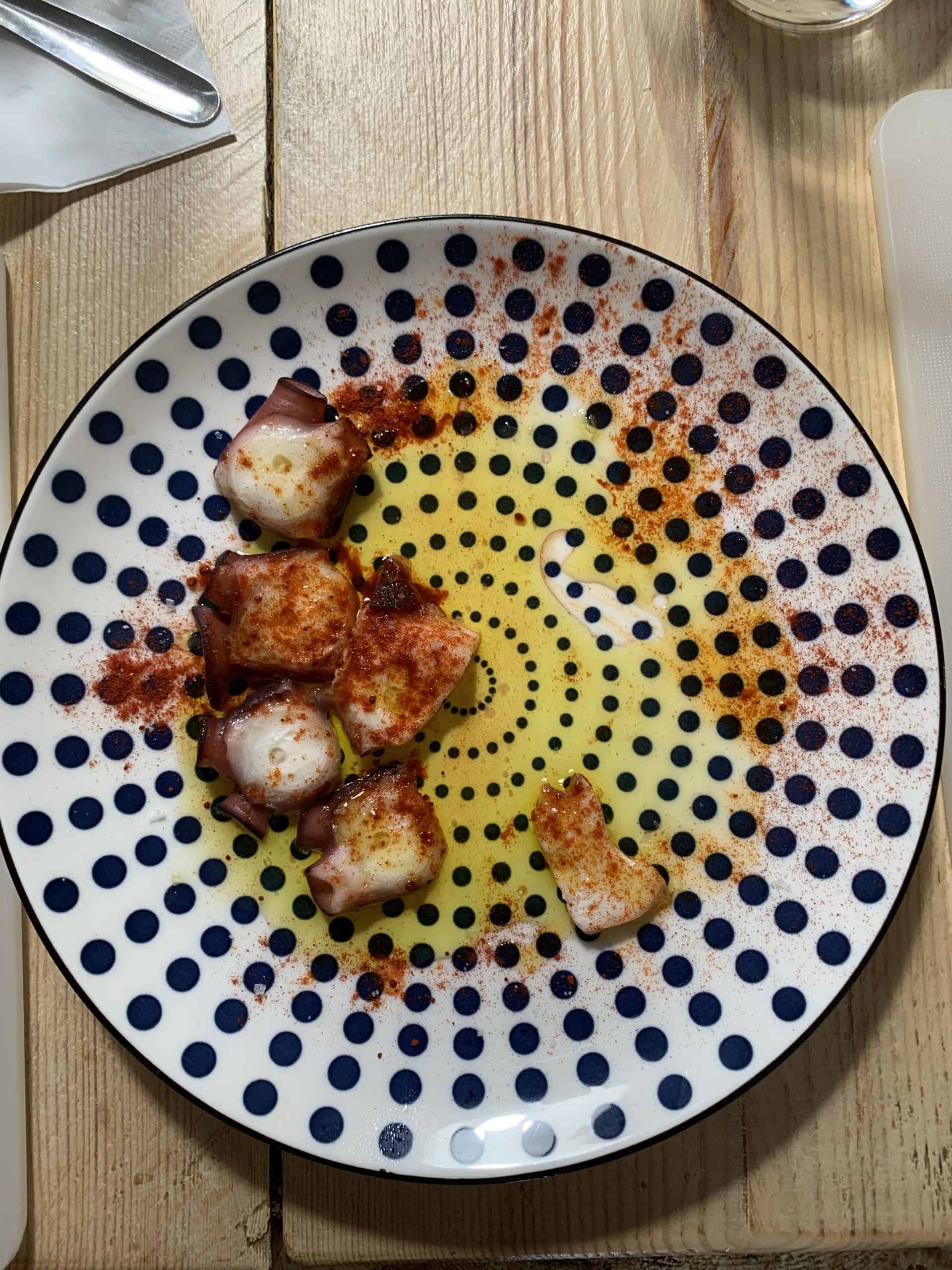
Learning How to Make Paella
Now for the hard part – making paella.
Paella has become synonymous with Spanish cuisine, but it’s not actually something locals eat on a daily or even weekly basis.
It’s certainly traditional, but most people only make it for special occasions because it takes several hours to make and the ingredients are expensive, especially if you are making seafood paella.
The instructor did a great job of teaching us proper chopping techniques and helpful tips and tricks.
For example, did you know that you can get rid of all the gritty sand in clams by buying them live and soaking them in salt water so they will open up naturally?
Or that stabbing the crawfish head while it’s cooking is how you get it to release the most flavor? Slightly gruesome but very useful paella tips!
Is This the Right Barcelona Cooking Class for You?
I’m not a cook, but I love to bake.
I struggle with cooking classes because I’m not much of a cook. When I travel with Ayngelina, I always see her taking detailed notes and meticulously filming techniques.
It’s clear that she can’t wait to give these recipes a try at home. I, on the other hand, almost never make the dishes on my own. However, I am a life-long baker, so I got excited when I found out we’d be making dessert.
The instructor announced that we’d be making individual Catalan Creams. She slid a bowl full of eggs in front of a young woman and told her to separate 12 egg yolks and to be sure no whites got mixed in.
The woman sheepishly looked around and asked if anyone felt confident enough to take over the task. I happily volunteered.
As I sipped white wine in the hot kitchen, I separated egg whites, kept milk from curdling, and truly felt in my element.
When it came time to blowtorch the sugar on top, I let others jump in and enjoy playing with fire.
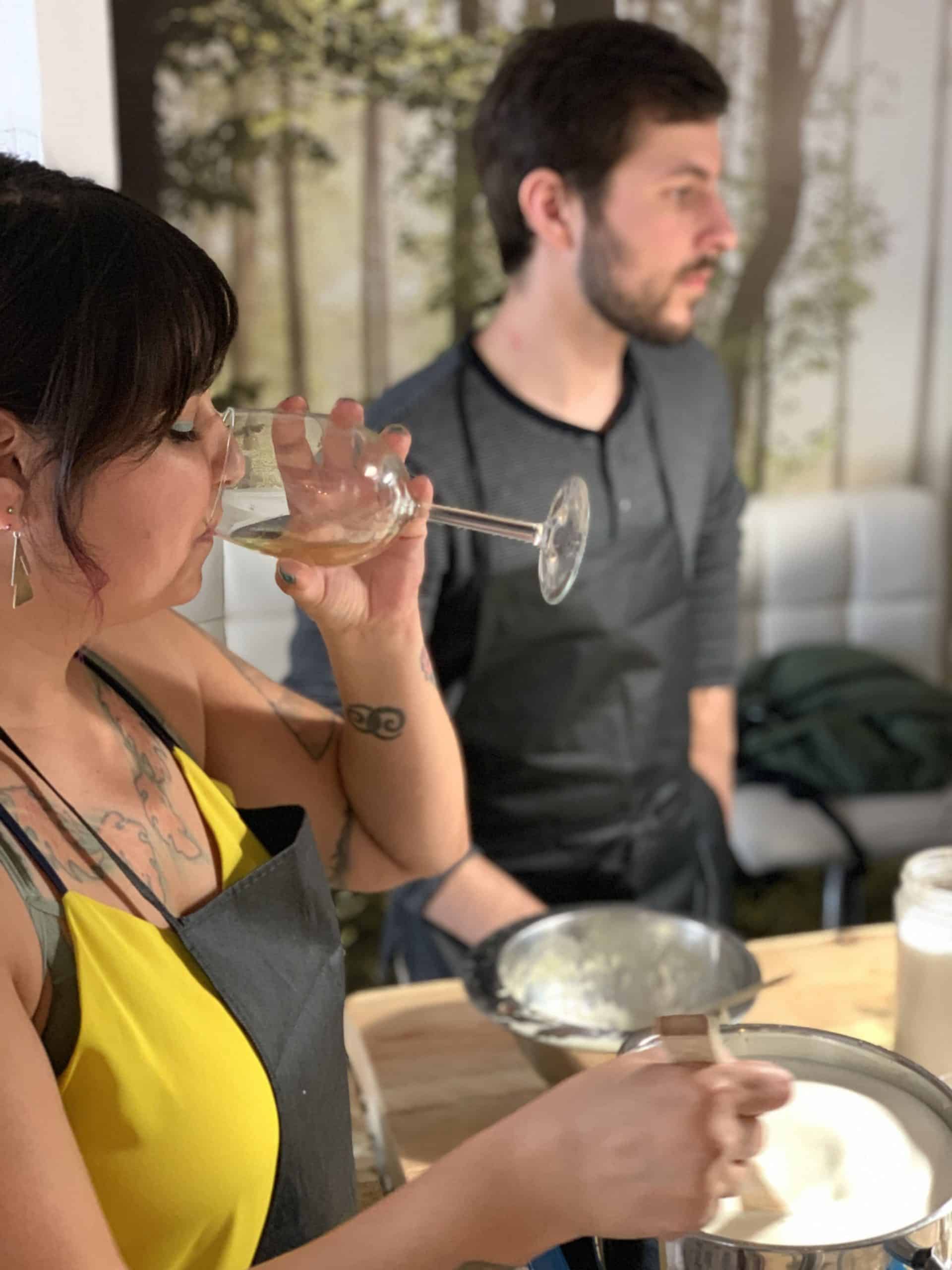
This Was a Fantastic Cooking Class in Barcelona
The class was even better than expected
Although the class took a few hours, I felt like it flew by. There were just enough people to keep a lively conversation going without having to fight to hear the instructor or try out a technique
By the time we sat down to enjoy our paella, everyone was comfortable chatting and passing bottles of wine.
Did I mention the class included unlimited wine from beginning to end?
I took full advantage of that and left the class with a solid buzz.
Even though I had barely slept on an overnight train and rushed, exhausted, to the class, by the end of the experience I was ready to explore the streets of Barcelona.
Remember how I said I never make the recipes from cooking classes?
Well, I actually saved all of these and truly want to make them at home. I’ll be honest, I’ll never make the paella, because I know the seafood will never be as fresh, but the appetizers and desserts are going into my recipe stash.
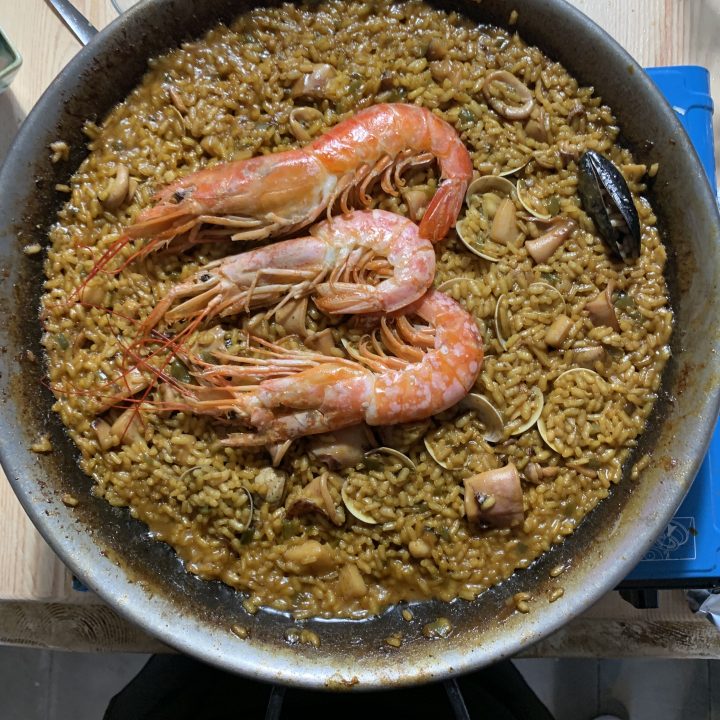
Spanish Paella
A classic Spanish paella recipe from Barcelona.
Ingredients
- 12 mussels, cleaned, beard removed
- 12 clams, soaked in 4 tablespoons of sea salt, 2 tablespoons of vinegar and water to cover
- 2 cups of bomba rice or risotto rice
- 4 cups of fish stock
- 8 prawns or shrimp
- 3 squids, cleaned and cut into rings
- 1 small sepia, cleaned, reserve the ink sack
- ½ onion, small diced 2
- garlic cloves, minced
- Pinch of Saffron
- 1 large red tomato, pulp grated, pinch of sugar
- 1 small green pepper, small diced
- 1 tablespoon of pimento puree
- Pinch of sugar and salt
- 2 cups of white wine
- Olive oil
Instructions
1. Add olive oil to the paella pan over low heat. Place the shrimp with their heads in the middle and wait until browned on both sides. Press the heads slightly to extract sauce. Remove shrimps and set aside.
2. Add in order: green pepper, onion and, finally, the garlic. Sauté until the vegetables are tender.
3. Now add in the grated tomato and the saffron. Sauté for about 5 minutes.
4. Add in the squid and cuttlefish. Breaking the bag of sepia sauce and add to the pan. Continue to sauté gently mixing the ingredients.
5. Pour the white wine to the pan, scraping any caramelized bits stuck to the pan.
6. Add the rice and sauté for about 3 minutes. Pour in the fish stock and bring it to boil, turn the heat to a simmer and cook for about 17 minutes, stir occasionally. The rice should be al dente, if more broth is needed, use the reserved stock if needed.
7. Add the clams and mussels and once they have opened, remove from the pan and reserved.
8. Taste for seasoning, and modify if necessary. Place the shell fish and the shrimp back on top of the rice, to reheat.
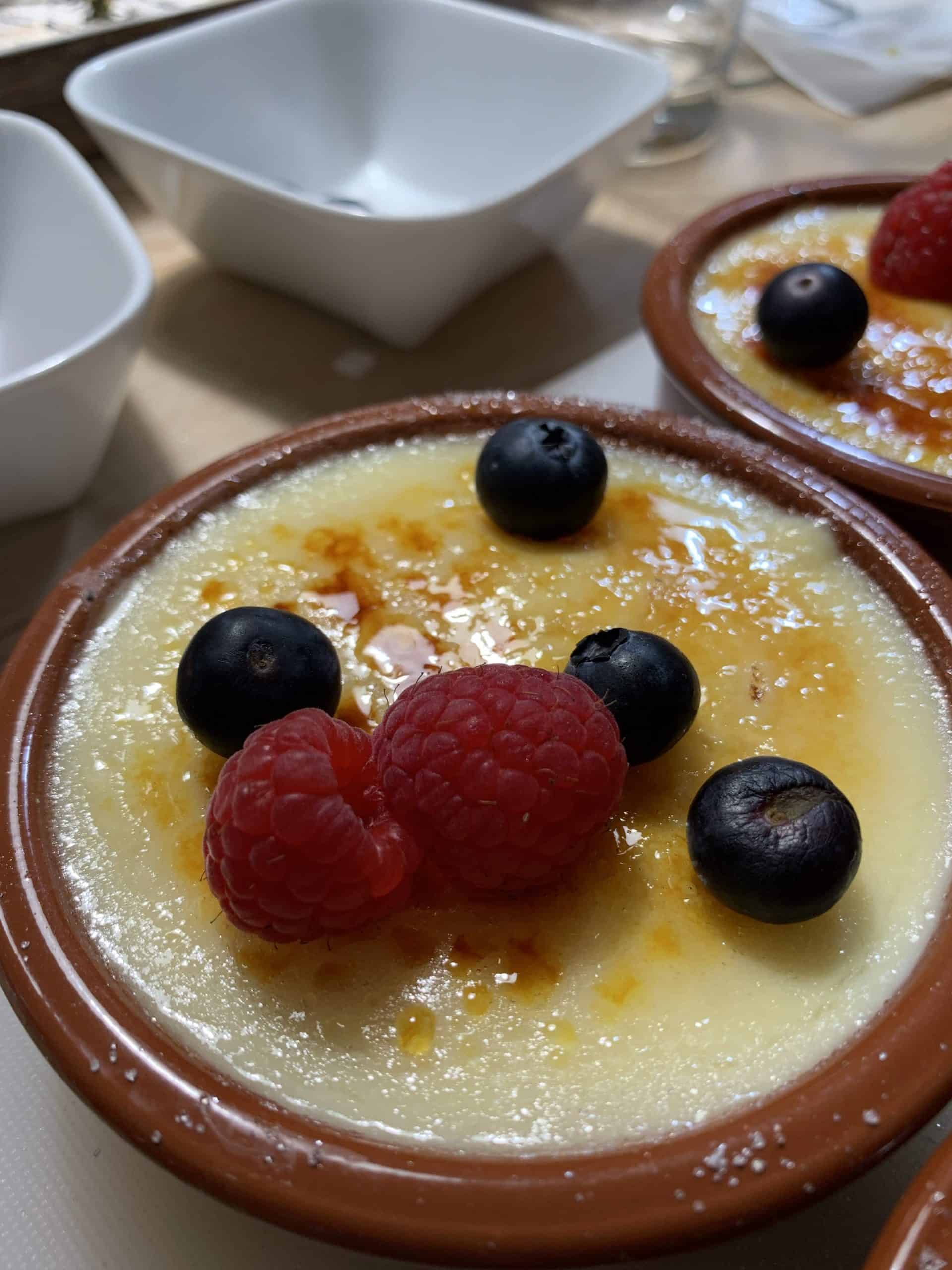
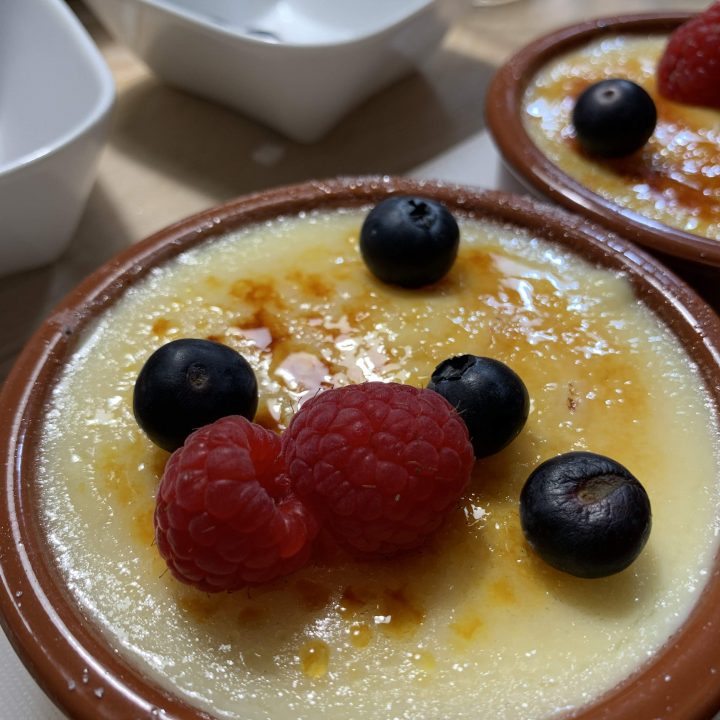
Crema Catalana
Similar to a French crème brûlée, Crema Catalana or Catalan cream is a deliciously creamy dessert from the Catalan region of Spain.
Ingredients
- 1 quart of milk
- 1 Cinnamon stick
- 1 cup sugar
- 1 Lemon peel of one lemon
- 1 Orange peel of one orange
- 8 egg yolks
- 2 tablespoons cornstarch
Instructions
- Heat the milk in a saucepan with the cinnamon, sugar, the lemon and orange peels, without the white part of the skin. Simmer, do not boil. Remove from the heat and let steep for about 1 hour. Now, strain the milk mixture into a medium bowl.
- In a separate bowl, whisk the egg yolks and the cornstarch until combined.
- Temper the egg yolk mixture with small amounts of warm milk, whisking continuously, until a smooth liquid has formed. Now add all of the egg mixture and back onto the stovetop on low to medium flame. Now switch to a wooden spoon and continue to stir, making sure that the custard does not stick to the bottom of the pan.
- When the texture of the custard begins to thicken, remove from the heat. Pour into desired bowls and set in the refrigerator to cool.
- Before serving, remove the custard from the refrigerator and top with a layer of granulated sugar. With a small torch, caramelize the sugar until it is golden. Serve with seasonal berries.
